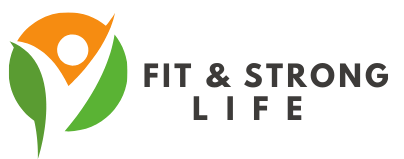Table of Contents
- Introduction
- Understanding the No Pain, No Gain Mentality
- Reason 1: Pain Doesn’t Equal Progress
- Reason 2: Recovery is Key
- Reason 3: Listening to Your Body Matters
- Reason 4: Variety is the Spice of Fitness
- Reason 5: Long-Term Success is About Sustainability
- Conclusion
- FAQs
Introduction
The phrase “No Pain, No Gain” has been a mantra in the fitness world for decades. Many believe that if you’re not feeling the burn, you’re not making progress. However, this mindset can lead to injuries, burnout, and an unhealthy relationship with exercise. In this article, we will debunk this popular myth and explore five reasons why you should ignore the notion that pain is a prerequisite for progress in your fitness journey.
Understanding the No Pain, No Gain Mentality
The “No Pain, No Gain” philosophy suggests that discomfort during workouts is a necessary sign of achieving results. This perspective encourages individuals to push through pain, believing that it equates to muscle growth and improved performance. However, this simplistic view overlooks the complexities of human physiology and the importance of safe, effective training methods.
Reason 1: Pain Doesn’t Equal Progress
One of the most significant misconceptions surrounding the “No Pain, No Gain” mentality is the assumption that pain directly correlates with progress. While it’s true that muscle soreness, known as delayed onset muscle soreness (DOMS), can occur after a challenging workout, it doesn’t necessarily indicate that you’re building strength or endurance.
In fact, progress can often be made without experiencing pain. For example, maintaining a consistent workout routine, improving your form, or increasing your stamina can lead to significant gains without the discomfort associated with intense training.
Key Takeaway: Progress should be measured by performance improvements, not just pain levels. For more on optimizing your fitness journey, check out our Essential Guide to Macronutrients for Optimal Fitness.
Reason 2: Recovery is Key
Recovery plays a crucial role in any fitness regimen. When you exercise, you’re actually causing micro-tears in your muscles. Your body needs time to repair these tears, which is when growth occurs. Ignoring recovery in favor of pushing through pain can lead to overtraining, fatigue, and even injury.
Research from the National Academy of Sports Medicine highlights that proper recovery strategies—such as rest days, hydration, nutrition, and sleep—are essential for optimal performance.
You can enhance your recovery with effective strategies outlined in our article on Top 10 Essential Supplements for Optimal Fitness 2024.
| Recovery Strategy | Benefits |
|---|---|
| Rest Days | Reduces risk of injury and improves performance |
| Hydration | Aids muscle recovery and overall health |
| Nutrition | Provides essential nutrients for muscle repair |
| Sleep | Enhances recovery processes |
Key Takeaway: Prioritizing recovery is crucial for sustainable progress in your fitness journey.
Reason 3: Listening to Your Body Matters
Your body communicates with you, and it’s essential to listen to those signals. Feeling pain during a workout can be a sign that you need to modify your approach, rather than push through it. Ignoring these signals can lead to injuries that may sideline you for weeks or months.
Fitness professionals often recommend adopting the R.I.C.E. method (Rest, Ice, Compression, Elevation) for addressing injuries. Learning to differentiate between good discomfort (like a challenging workout) and bad pain (like sharp or persistent pain) is crucial for long-term fitness success.
For more insights on effective strength training, visit our piece on 10 Essential Tips for Perfecting Strength Training Form.
Key Takeaway: Being attuned to your body’s signals can prevent injuries and promote a healthier fitness journey.
Reason 4: Variety is the Spice of Fitness
One of the most effective ways to stay motivated and avoid injury is to incorporate variety into your workouts. This approach not only keeps things interesting but also reduces the risk of overuse injuries that can arise from repetitive motions.
Instead of adhering to a “no pain, no gain” philosophy, consider mixing up your routine with different types of exercises—like strength training, cardio, flexibility, and mobility work.
According to the American Council on Exercise, cross-training can enhance overall fitness while minimizing the risk of injury. Check out our guide on Top 5 Carbs for Enhanced Fitness Performance 2024 for more ideas on energizing your workouts.
Key Takeaway: Embracing variety in your workouts can lead to a more balanced and enjoyable fitness experience.
Reason 5: Long-Term Success is About Sustainability
Fitness should be a lifelong journey, not a sprint. The “No Pain, No Gain” mentality can create a toxic cycle of extreme effort followed by burnout and injury. Sustainable fitness practices prioritize consistency over intensity, allowing individuals to build habits that last a lifetime.
Creating a routine that feels enjoyable and achievable will encourage you to stick with it. Research shows that people who find pleasure in their workouts are more likely to maintain their fitness over the long term.
For tips on building a sustainable fitness routine, explore our article on 10 Essential Meal Prep Tips for Fitness Success.
Key Takeaway: Focus on creating a sustainable fitness routine that prioritizes enjoyment and consistency over temporary pain.
Conclusion
The “No Pain, No Gain” mentality is an outdated approach that can lead to more harm than good. By recognizing that pain isn’t a prerequisite for progress, emphasizing recovery, listening to your body, incorporating variety, and prioritizing sustainability, you can cultivate a healthier relationship with fitness. Remember, the goal is to enjoy the journey while achieving your goals—without unnecessary pain.
FAQs
Q: Is some soreness after a workout normal?
A: Yes, mild soreness can be a normal response to increased activity, but it shouldn’t be debilitating.
Q: How can I tell if I’m pushing too hard during workouts?
A: Pay attention to your body’s signals. If you experience sharp pain, fatigue, or prolonged soreness, it may be time to reassess your training intensity.
Q: What are some good recovery strategies?
A: Incorporate rest days, adequate hydration, balanced nutrition, and quality sleep into your routine to support recovery.
For more information on fitness and recovery, check out the American Council on Exercise and the National Academy of Sports Medicine.
By shifting your mindset away from “No Pain, No Gain,” you’ll find a fitness path that is not only enjoyable but also effective in the long run.




